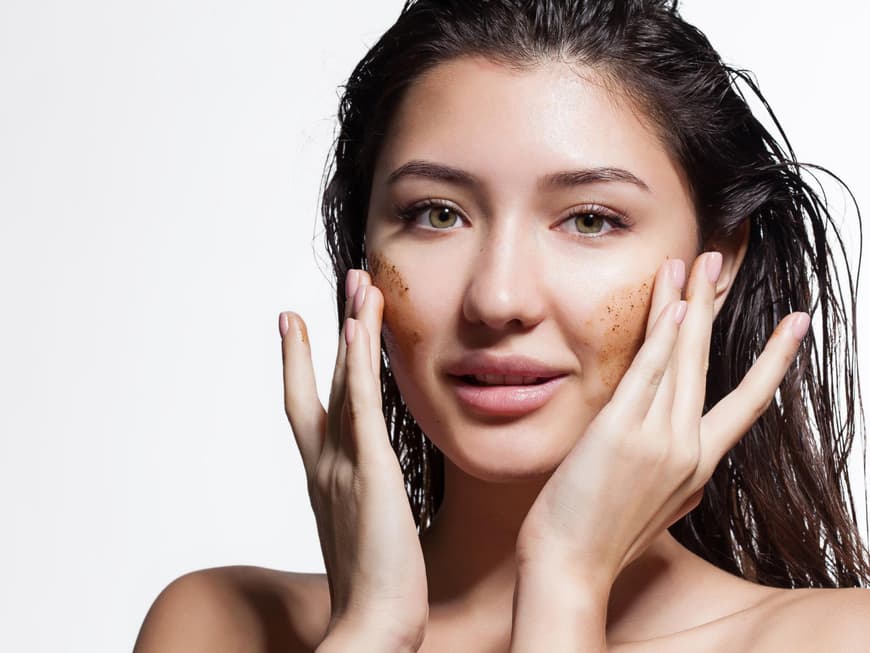
Exfoliants have long been a must-have on every cosmetics shelf. But which product is actually suitable for whom? An overview:
They make the skin super-soft and rosy and reduce unpleasant spots and even acne scars step by step. Enlarged pores, first wrinkles and pigmentation spots can also be effectively reduced with their help. However, not all exfoliators are the same! In addition to a classic rubbing paste, which removes dead skin cells with small granules, there are now countless other products to gently renew the complexion. Beauty salons and dermatologists have also been offering highly effective treatments to rejuvenate and refresh the skin for some time now. The methods and peeling products we should rely on depend in particular on our own skin type. If the complexion is robust and "easy to care for", the application can be a little more intensive. Oversensitive and delicate skin, on the other hand, needs gentle products.
Mechanical
Tiny abrasive particles immediately make the skin velvety soft and rosy.
That's what's behind it: Old flakes of skin are removed from the skin's surface with the help of delicate grains. Depending on the peeling, the abrasive particles consist of sea salt, sugar, ground seeds (such as peaches or almonds) or the finest plastic particles.
This is how it works: Moisten the skin well, gently massage in the product and wash off the residue. The peeling should be used no more than once a week.
Who is it suitable for? For robust, normal to oily skin. The abrasive effect causes minimal irritation to the complexion. If the skin is prone to redness, allergies or acne, this can cause additional irritation. Even with perfectly healthy skin, do not apply the scrub too often and only apply a little pressure
Chemical
Mild fruit or lactic acids renew the skin without friction.
That's what's behind it: These peelings soften and exfoliate the upper horny layer. Acids from fruits and lactic bacteria are used for this. So that the complexion is not irritated, peelings for home use only contain a very small amount of acid.
This is how it works: Moisten the skin and apply the peeling. Wash off any residue after 10 minutes and apply cream to the face. The procedure can be used twice a week.
Who is it suitable for? Acid-based peels are a particularly good choice for insensitive, normal or acne-prone skin. Their effect sets in two days after application, leaving the skin looking plumper and fresher. Fine wrinkles and pigmentation spots can also be reduced in the long term.
Enzymatic
The body's own proteins naturally break down dead cells
That's what's behind it: This technique imitates nature: enzymes in the body have the task of breaking down proteins. Thanks to this property, an enzyme peel is able to break down and remove old skin cells. Active ingredients from papaya or pineapple are used for this.
This is how it works: Moisten your face and apply the peeling. Wash off after five minutes. An enzyme peeling can be used twice a week.
Who is it suitable for? Thanks to their particularly gentle action, enzyme peels are even suitable for sensitive and very dry skin. Normal and oily skin can also be wonderfully refreshed. The skin immediately feels smoother and more velvety. For very dry skin, we recommend applying a moisturizer afterwards.
How the professional can help
At the dermatologist: For acne or scars, the dermatologist offers a chemical peeling treatment. With an acid content of up to 70 percent, it is much more powerful than an acid peeling for home use. 14 days before the actual treatment, the skin is pre-treated with a mild acid. On the day of the treatment, the doctor applies the high-percentage acid. After five minutes, all residue is removed. This procedure is repeated eight times at two-week intervals. Total cost: approx. 300 euros.
At the beautician's: Pigment spots, blemishes and the first wrinkles can be reduced with a classic microdermabrasion. Tiny abrasive particles of aluminum oxide are blown onto the skin with a special device and vacuumed off. This removes the uppermost horny layer and ensures a more even complexion. To achieve a lasting effect, the treatment must be repeated every two months. One treatment costs around 80 euros.
